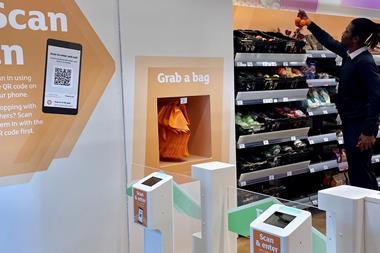T he meat industry is under pressure across the whole of the UK. Recent challenges have included export bans on meat and dairy products, imposed after an outbreak of foot and mouth disease; and the ongoing threat of avian flu.
However, the farming and processing of red meat in Scotland continues to make a significant contribution to the Scottish economy, and many in the industry believe Scotland is in a good position to overcome these challenges.
Sales of Scotch beef, Scotch lamb and specially selected pork have been good, according to Quality Meat Scotland (QMS). Beef purchases increased UK-wide by more than 11% during the year to 17 June 2007, with lamb and pork sales increasing by 8% over the same period.
Scottish primary processors are mainly trading with high street retailers. More than 70% of beef and sheepmeat and more than 80% of pigmeat are going to multiple or independent retail outlets.
England and Wales is the most important marketplace for Scottish red meat. Almost two-thirds of beef, half of sheepmeat and three-quarters of pigmeat from Scottish primary processors is sold into the UK market outside Scotland.
Marketing campaigns for these products helped to stimulate interest and demand for these products last year, leading to growth in value of 5% to £725m, according to QMS.
"The Scotch brand is going from strength to strength, and is now as well recognised throughout the UK," says QMS chairman Donald Biggar.
QMS is focusing on the promotion of Scotch lamb this autumn with a campaign targeting women in the 35-plus age group women as well as running a Scotland-wide radio campaign throughout the summer on major independent stations for specially selected pork. In-store tasting and recipe leaflets are being used to support all the campaigns.
The Scottish government is also ramping up support for the meat industry. Just two weeks ago, Quality Meat Scotland was able to double the size of this year's Scotch lamb marketing campaign after receiving a grant of £100,000 from the Scottish Executive. Biggar welcomes the gesture of support for livestock farmers. "This is excellent news and shows the Scottish government's commitment to our sheep sector and its support at this difficult time," he says.
"As a result of this contribution, and the decision by the QMS board to draw on its financial reserves, we are now able to effectively double the size of our festival of Scotch lamb promotion."
Last month, the organisation's successful Scotch beef campaign kicked off in London and Scotland. It will run until November this year.
The lucrative London area is a particularly attractive market, and much of the emphasis will be on encouraging consumers to experience the taste and quality of Scotch beef - which QMS says is similar to the quality they would expect to find in top restaurants.
"Herd sizes of all species are larger than the UK average and, in the pig sector, slaughter weights in Scotland are significantly higher, which lowers the fixed costs per animal," says Biggar. "The Scottish red meat industry has a well-deserved reputation for top quality products, which combine high welfare with modern animal husbandry.
"It is policed by an assurance programme, which guarantees high quality and welfare standards as well as complete traceability throughout the production chain."
However, pressure on grain growers to switch to biofuel production is beginning to increase feed costs and producers are feeling the pinch, particularly in the pig and beef sectors. About 80% of the production cost of a pig is in the feed, so increased costs could undermine the positive effects of the rising pork market.
Aside from this, the Scottish red meat industry enjoys an enviable reputation, according to Biggar.
"The unique regional characteristics of Scotch beef and Scotch lamb have earned Protected Geographical Indication status from the European Commission, which is important in terms of export revenue," he says. "Exports of beef alone from Scotland are worth more than £12m."n

















No comments yet